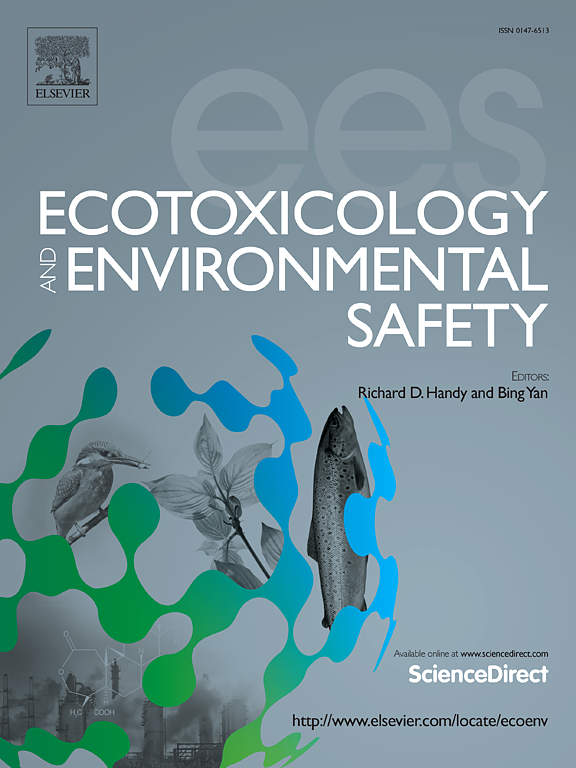IF 6.2
2区 环境科学与生态学
Q1 ENVIRONMENTAL SCIENCES
引用次数: 0
摘要
2,2,6,6-四甲基哌啶-1-氧自由基氧化纤维素纳米纤维(TEMPO-CNFs)的使用不断扩大,引起了人们对其环境释放和潜在生态影响的关注。评估其环境影响对于确保其可持续使用至关重要。在本研究中,我们旨在评估 TEMPO-CNFs 对大型蚤繁殖的生态毒性,并探索观察到的影响背后的机制。根据经济合作与发展组织的测试指南评估了生殖毒性,确定了无观测效应浓度(NOEC)和 10 %效应浓度(EC10)。通过水化学分析、摄食抑制试验、肠道排空实验和为期 10 天的生命表实验,对机理进行了深入研究。TEMPO-CNF 的 NOEC 和 EC10 分别为 12.5 毫克/升和 3.4 毫克/升。结果支持稀释效应假说,表明小球藻等必需食物的供应量减少是毒性的驱动因素。肠道排空实验表明,将大型蚤个体转移到不含 CNF 的环境后,它们体内的 TEMPO-CNF 在 24 小时内就会排出体外。研究结果表明,除非持续接触高浓度的 TEMPO-CNFs,否则它不太可能影响大型鲤鱼的繁殖。这些研究结果支持以环境可持续的方式应用 TEMPO-CNFs 并控制接触量。本文章由计算机程序翻译,如有差异,请以英文原文为准。
Dilution effect of TEMPO-oxidized cellulose nanofibers on reproduction of Daphnia magna
The expanding use of 2,2,6,6-tetramethylpiperidine-1-oxyl radical-oxidized cellulose nanofibers (TEMPO-CNFs) raises concerns about their environmental release and potential ecological impacts. Evaluating their environmental effects is critical for ensuring their sustainable use. In this study, we aimed to assess the ecotoxicity of TEMPO-CNFs on Daphnia magna reproduction and explore mechanisms underlying observed effects. Reproductive toxicity was evaluated according to the Organisation for Economic Co-operation and Development test guideline, determining the no observed effect concentration (NOEC) and 10 % effect concentration (EC10). Mechanistic insights were investigated through water chemistry analyses, a feeding inhibition test, a gut evacuation experiment, and 10-day life table experiments. The NOEC and EC10 for TEMPO-CNFs were 12.5 mg/L and 3.4 mg/L, respectively. Results supported the dilution-effect hypothesis, indicating reduced availability of essential food, such as Chlorella, as a driver of toxicity. Gut evacuation experiments indicated that TEMPO-CNFs in D. magna individuals were excreted within 24 h when they were transferred to a CNF-free environment. The results suggest that TEMPO-CNFs are unlikely to impact D. magna reproduction unless exposure is continuous and at high concentrations. These findings support the environmentally sustainable application of TEMPO-CNFs with controlled exposure.
求助全文
通过发布文献求助,成功后即可免费获取论文全文。
去求助
来源期刊
CiteScore
12.10
自引率
5.90%
发文量
1234
审稿时长
88 days
期刊介绍:
Ecotoxicology and Environmental Safety is a multi-disciplinary journal that focuses on understanding the exposure and effects of environmental contamination on organisms including human health. The scope of the journal covers three main themes. The topics within these themes, indicated below, include (but are not limited to) the following: Ecotoxicology、Environmental Chemistry、Environmental Safety etc.

 求助内容:
求助内容: 应助结果提醒方式:
应助结果提醒方式:


